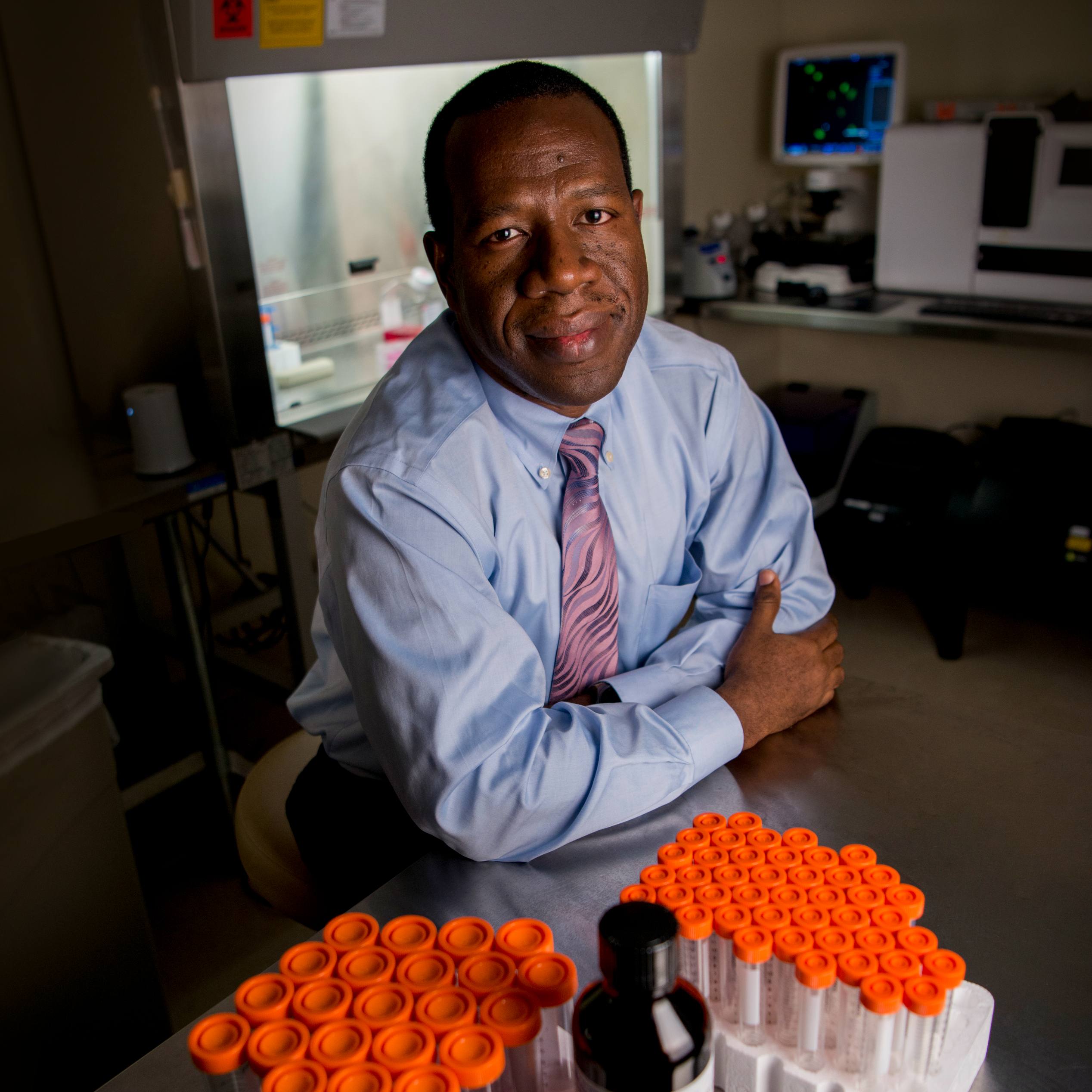-
Science Saturday: Sleuthing out the fingerprint of disease
In the winter of 2014, staff of the Newborn Intensive Care Unit had a serious problem. Researchers at Mayo Clinic Hospital — Rochester, Saint Marys Campus noted a rise in the number of resistant bacteria in the unit. The culprit was methicillin-resistant Staphylococcus aureus, more commonly known as MRSA. Such incidents have become increasingly common in recent years — even at institutions with excellent infection control programs. But Mayo's situation was unique. It characterized the outbreak using DNA identification technology, detecting the genomic identity of a pathogen in most of the babies before they showed any signs of infection. Just as a detective dusts a crime scene for fingerprints, Mayo researchers had canvassed the ICU for traces of MRSA. Once they detected the dangerous bacteria, they captured genomic fingerprints to identify the exact forms that were causing the outbreak. The researchers then used that information to stem the spread of the outbreak and treat the affected babies.
This high-tech sleuthing, led by Robin Patel, M.D., is changing the way clinicians track the spread of bacteria. The technologies she and her team have developed also are being used to solve other medical mysteries by providing diagnoses to patients grappling with previously undiagnosable infections.

Living in a microbial world
Scientists have only begun to appreciate the richness and complexity of the microbes that live in and around us. Microbes cover practically every surface on the planet, including our own organs and orifices. All told, Earth could be home to as many as 1 trillion microbial species. That means these single-celled organisms are largely uncharted territory.
Like fingerprint dust illuminates the distinctive patterns of swirly oils, once invisible to the naked eye new technology makes it possible for researchers to see things they've never seen before. "It's a great time to be a microbiologist," says Dr. Patel. "We know only a fraction of what's happening with microbes. We haven't even named many of them, including those found in our bodies. And we certainly haven't sequenced more than a small fraction of them."
But that is changing, and fast.
Advances in technology and microbiology have made it possible for researchers to sequence microbial DNA directly from the environment — without having to grow the organisms first. And the cost of sequencing has dropped by several orders of magnitude, meaning that genomics is no longer a luxury. All this is happening at a critical time in medicine. Scientists have long warned of a post-antibiotic future that will forever alter procedures we take for granted, such as common surgeries, chemotherapy and cesarean sections.
"We are incontrovertibly dealing with a crisis of antibacterial resistance," says Dr. Patel. "Year after year, we are seeing more and more bacteria that have developed resistance to the antibiotics that we would normally have used to treat them."
Antimicrobial resistance is not affecting every patient and institution in exactly the same way at exactly the same time, but it can affect any patient and any health care institution, explains Dr. Patel. So it's up to each institution to identify and control the problem they face.
"In the laboratory, we have developed many tools for identifying antibiotic-resistant bacteria that could help us keep it under control in health care settings," she says. In the Newborn Intensive Care Unit study, Mayo Clinic staff swabbed the surfaces of the unit, as well as the nostrils, armpits and groins of the babies in its care for traces of antibiotic-resistant bacteria. At one point in their three-year study, samples were being taken every week. The team grew the samples, and then extracted and sequenced the DNA of the bacterial species that emerged.
When they analyzed the sequences, they discovered that the unit was being struck by two outbreaks caused by two strains of MRSA simultaneously. Clinicians quarantined affected babies in single rooms or placed those with the same variety in the same multibed space. They also treated the infected babies with an antibiotic to rid them of MRSA. The findings appeared October 2018 in Infection Control & Hospital Epidemiology.
The researchers have used the tool to investigate other hospital- and community-acquired infections. For example, they analyzed blood samples from the over 150 patients who developed Staphylococcus aureus blood infections at Mayo Clinic's Rochester campus in 2015. They found that nearly one-third of those cases were MRSA. When Dr. Patel and her laboratory sequenced the staph organism from each sample, they uncovered only two that might have been related. That means that just two appeared to have been spread through the hospital setting. "The technology is useful to see if there's an outbreak. If strains are not related, then there's no outbreak," says Dr. Patel. "Not every infection is acquired as part of an outbreak. They happen sporadically, as well. It can be just as helpful to know there's not an outbreak as to know there is one."

Through Mayo Clinic Laboratories, Dr. Patel and her team are helping investigate numerous outbreaks or potential outbreaks for other institutions worldwide. Such superbug infections can spread rapidly, defy treatment and lead to life-threatening infections.
"We know that this is a significant, global problem," says Dr. Patel. "Genomics isn't going to make antibiotic resistance go away, but it is going to give us information we need to fight it more intelligently."
Solving a Mystery
Outbreaks of infection are on the rise. In 2016, infectious organisms killed more than 6 million people worldwide, roughly the same as car crashes and other accidents. In many cases, the culprits are familiar: HIV, tuberculosis and malaria.
But a large percentage of infections encountered in clinical practice involve organisms that remain unknown. That's because researchers have only been able to grow in the lab, or "culture," about one percent of all bacteria. Now advances in genomics are enabling scientists to identify the other 99 percent and pinpoint the causes of infection, so patients can receive the potentially lifesaving treatments they need.
Case in Point
In 2016, a 52-year-old man showed up at Mayo Clinic with a prosthetic knee joint infection after his knee was replaced at another hospital. Within six months of surgery, he started experiencing pain, swelling and drainage. His doctor had tried unsuccessfully to grow the offending bacteria. He was prescribed multiple courses of antibiotics, with little success.
A few months after seeing the patient, Mayo physicians removed his prosthesis. Dr. Patel's team applied a technique they had developed over a decade ago to sample biofilms on the surface of the implant and tried again to culture it. They failed, as well. Like 15 to 20 percent of cases of prosthetic joint infection, the offending bacteria didn't grow. But this time, Dr. Patel's laboratory tried something new. They took that sample and sequenced everything in it with a technique called "shotgun metagenomics," which sorts out the human "us" from the bacterial "them."
"We're mostly human after all," says Dr. Patel, "which means that what we sequence is mostly human DNA. To find the microbial DNA in the large sea of humanity, we had to develop strategies to deplete human DNA in the laboratory."
After trying various techniques, Dr. Patel's team found that they could use chemicals to break open human cells and wash away the released human DNA, leaving the hardier bacteria unscathed. Then they processed and sequenced the DNA that remained. When they used this approach to analyze the knee surgery patient's clinical samples, they discovered an overabundance of a bacterium called Mycoplasma salivarium, which is commonly found in the saliva of healthy people. But they couldn't leave it at that. Just because the bacterium was there, didn't necessarily mean it caused the infection.
When Dr. Patel's lab looked for bacterial DNA, they started seeing it everywhere — in their reagents, in the plastics they used to collect specimens, in their test-tubes. So they ran additional analyses and concocted specialized recipes on which to grow the bacterium they suspected was the culprit, to prove they were right.
It was the first time this type of bacteria was shown to cause a prosthetic knee infection. It turns out that the antibiotics the patient had been prescribed — vancomycin and cefepime – were useless against it. Ultimately, the patient's prescription was switched to doxycycline, an antibiotic known to be effective against this species of bacteria. At his last visit to Mayo, the patient was pain-free. But he will likely have to continue treatment indefinitely to keep the infection under control.
"My hope is that we've entered a new era where we can use sophisticated sequencing analysis to better understand the pathogens we are dealing with," says Dr. Patel. "We can use these tools to determine how pathogens are spread, and also to uncover the genes that make them particularly dangerous or drug-resistant. This will, I believe, ultimately lead to better care for our patients."
Dr. Patel and her team are tapping their techniques to investigate a backlog of unsolved infections. They've analyzed dozens of samples of spinal fluid, blood and skin biopsies, and have applied their approaches to unusual cases of infectious diseases, including leprosy, malaria, and the tick-borne illnesses babesiosis and relapsing fever. The processes are expensive and time-consuming but potentially revolutionary.
"This type of technology is very high-tech, and it is not to be used lightly. It's not for people with the common cold," says Dr. Patel. "However, for medical mysteries like outbreaks and undiagnosed conditions that might be caused by an infection, new technologies are providing invaluable clues."
— Marla Vacek Broadfoot, April 2019
To read more about this technology, head over to Mayo Clinic's Center for Individualized Medicine blog.







